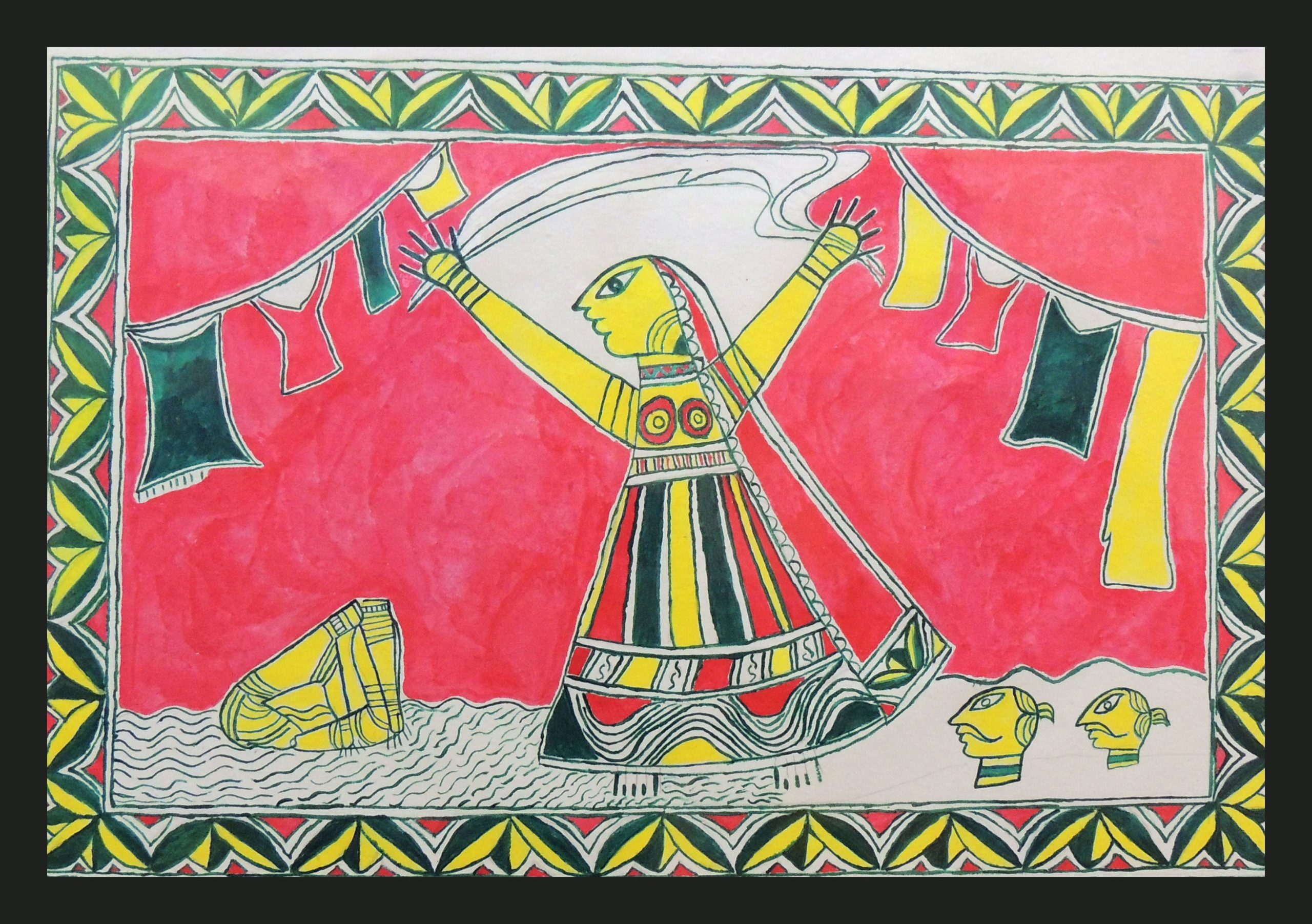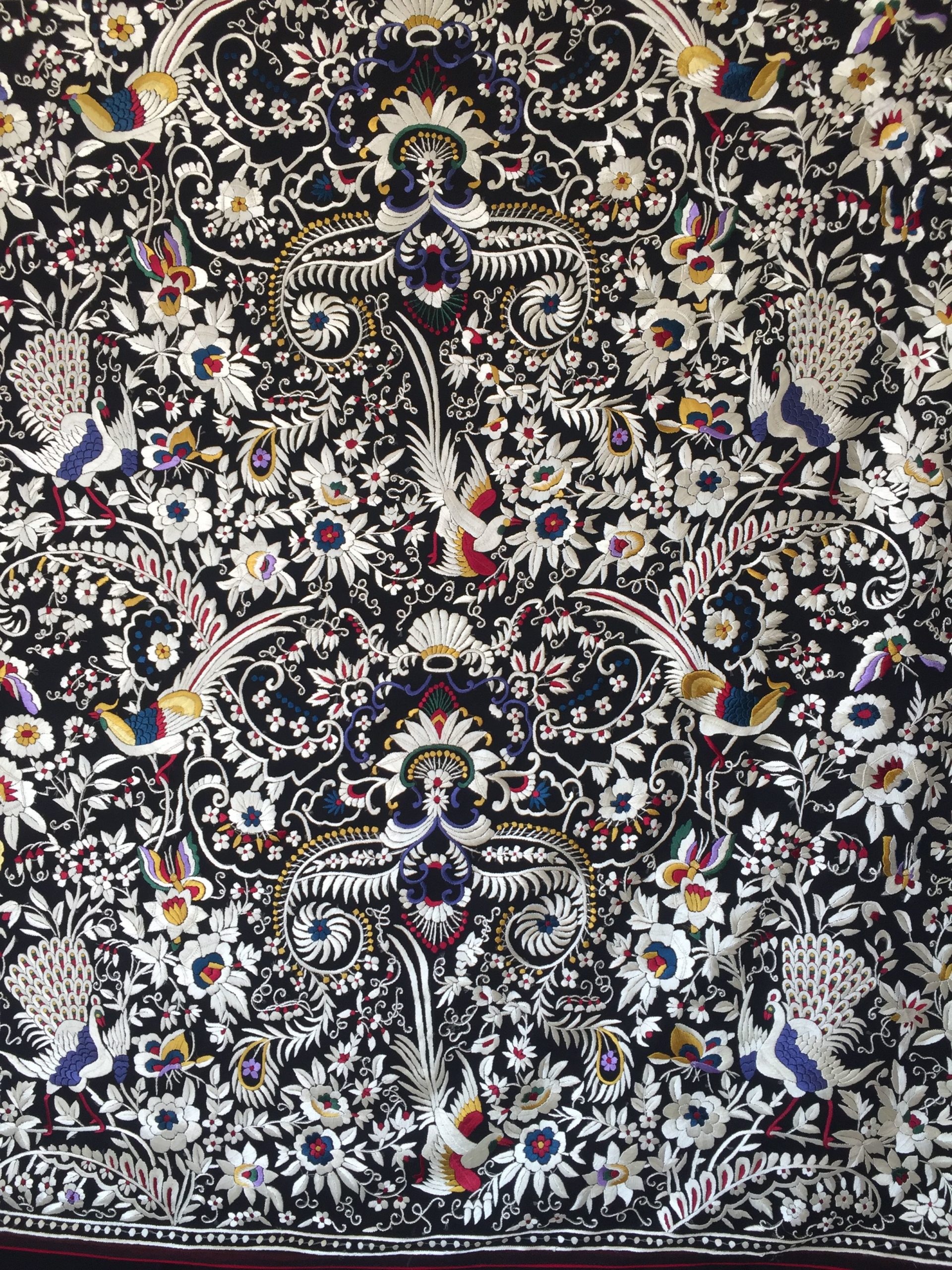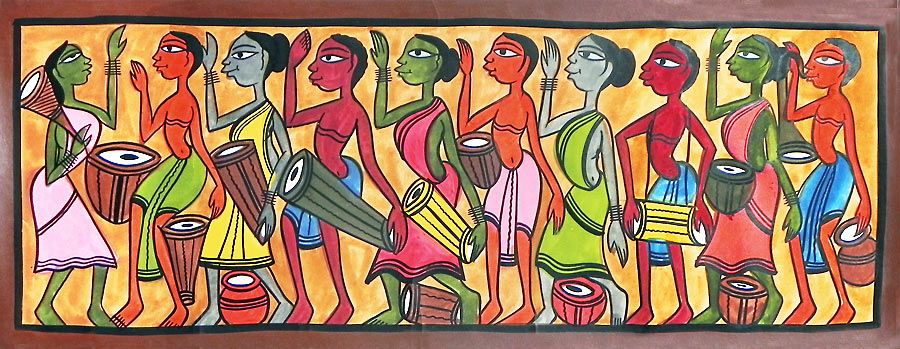Dying Traditional Arts and Crafts and Our Responsibility to Keep Them Alive
Disappearing arts of India
Losing heritage and forgetting history
Civilization
February 22, 2020

(motion picture credit:Indiatimes.com)
India's art heritage is as various equally its people. Bharat is known for its rich cultural heritage from ancient times, yet amidst all these, there are art forms that are dying.
From the marshy desert of Kutch in Gujarat has emerged one of the most exquisite forms of paintings, Rogan, that is painting fabrics with boiled vegetable dyes. The dyes are applied either with a stylus for painting or a metal cake for press. One time widespread across the large territory of Kutch, this art form has shrunk dramatically and today the situation is so bad that simply one family in the surface area is withal practising Rogan.
The state of affairs is hardly any different for Manjusha, another aboriginal art form, this time hailing from Bhagalpur in central Bihar. The local customs that has been practising this art from the viith century is of a sudden struggling to keep it alive. Similar is the story of Warli paintings from Maharashtra or the traditional Santhal painting. Traditionally, near every region of India has had its ain form of art that includes drawings, paintings, embroideries, carvings, handicrafts, handloom and much more. Unfortunately, many of these arts are disappearing and the country is facing a real threat in terms of losing its culture and heritage.
Different art forms arise from different social and linguistic groups. Each fine art form has its ain cultural significance and history. But gradually, these crafts are dying out with increased modernisation and industrialisation. In this fast engineering science run world, people have started to shift their attention from the traditional handicrafts and handloom to new innovations. With fewer customers, many craftsmen and artisans are getting poorer day by day and forced to have up alternative occupations.
Mercifully, there are some efforts afoot to restore the dying arts to their original glory as preserving and protecting the skills and knowledge of traditional crafts is a very important step in preserving the country'southward rich heritage. To celebrate the fine art of Bharat, Kala Kumbh is historic each year on February 18th, the exhibition is showcased in several cities like Bengaluru, Kolkata, Chennai and Mumbai and they are sponsored by The Consign Promotion Council of Handicrafts and organised by the Ministry of Textiles where maestros of unlike forms come up together and celebrate art that has received the Geographical Indication or GI tag. Still, much more needs to be done to save the dying arts, especially those that are now in a disquisitional country. Here are some of the disappearing arts of India:
Manjusha painting- the art class in a serial

(flick credit: Pinterest)
Manjusha is believed to exist the only art form in India that is displayed in series, each representing a story within it. This art form originated in Anga Pradesh (modern-day Bihar). Dorsum then, they made products only to exist used in Bishahari festival, a festival dedicated to the snake god that took place in the district Bhagalpur. This fine art flourished heartily during British dominion in India. Even so, it started fading abroad in the middle of the 20th century. Fortunately, the Bihar government is making efforts to revive this craft and patent it as Bhagalpur folk fine art.
Rogan painting- the lone 6 survivors

(film credit: www.roganartnirona.com)
Rogan arts and crafts, an art grade which is over 300 years one-time, is perchance one of the few testaments to this living heritage. The Rogan painting is washed just by half-dozen surviving people in Republic of india right now. The Khatri families living in the Kutch expanse of Gujarat have been the practitioners of the art for seven generations, but they fearfulness that this will be the last surviving generation for the Rogan painting as the time to come generation isn't patient or hardworking enough to take it up. This boggling form of art is executed on cloth with brush oil, paints and a 6inch sparse metal rod.
Parsi embroidery- the embroidery that travelled the earth

(picture credit: pinterest)
Parsi embroidery has been a role of India'south various textile heritage. During the Statuary Historic period, this art form took birth in Islamic republic of iran and with time information technology drew influences from European, Chinese, Persian and Indian civilisation. The saris that depict Parsi embroidery are known every bit Parsi Gara Saris and each piece takes about 9 months to complete. But now, in that location are very few markets available because of the failing Parsi community and mass production of clothes that are readily bachelor
Warli painting: Of rice and earth

(motion picture credit: Wikipedia)
Indian art forms are recognised for their grandeur and vibrant colours simply the Warli painting is exclusively known for its primitive design and use of only two colours. Warli painting was originally a means of decorating walls of the mud houses during special occasions like harvest and weddings. The artisans used rice paste with natural gum to make the white color which is used every bit paint on the ascetic brown mud walls to form a striking contrast. The painting is now bachelor on newspaper and other forms likewise. The beauty of the Warli painting lies in the primitive tribal designs which are unproblematic but have a deeper meaning. The art form is aboriginal, believed to have originated in the tenth century, even though it is very like to those done between 500 and 10,000 BCE in the Stone Shelters of Bhimbetka, in Madhya Pradesh.
Santhal painting- Magic in hues

(picture credit: Dolls of Bharat)
Santhal paintings are about merry times, whether it is harvest or finding joy in daily activities, the tribal figures manage to lift up your spirits and give a soothing feeling. Santhal Paintings take simple themes like music, wedding, harvest, and daily rituals simply the colours and artists' imagination bring alive the most mundane. These tribal paintings are drawn by a special community chosen Jadu Patua or magic painters in the Santhal Paragana on the edge of Bihar and West Bengal. Dating back to the pre-Aryan period, the Santhal tribe is ancient but their paintings are interestingly mod human figures pattern. The figures are dramatic all the same symmetrical and realistic. Santhal painters mainly remained entirely naive as they hardly came under the influence of the Mughals, Rajput or the British. Hence their designs and fashion remained original. The painters utilize handmade paper which is sometimes backed by cloth-based canvas. Natural vegetable-based colours are used for paint as seen in nearly tribal paintings. Santhal paintings are exceptional but sadly condign increasingly rare. These paintings originally had numerous genres but cannot be spotted now due to fewer people participating in this course of art. Artisans today are not fetching the correct price due to lack of a platform for selling their paintings, so they are shifting towards other livelihood options.
Source: https://mediaindia.eu/culture/disappearing-arts-of-india/
0 Response to "Dying Traditional Arts and Crafts and Our Responsibility to Keep Them Alive"
Post a Comment